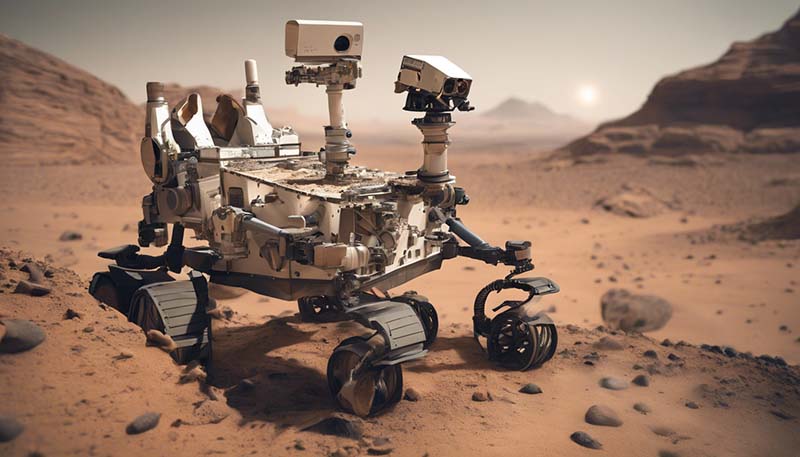The Curiosity Rover: Unraveling the Mysteries of Mars
Mars,the red planet,has always been a subject of fascination for scientists and space enthusiasts alike.Its similarities to Earth in terms of size,composition,and the presence of polar ice caps have led to numerous questions about the possibility of life and the potential for human colonization.The Curiosity Rover,a car-sized robotic geologist launched by NASA in November 2011,has been instrumental in unraveling the mysteries of Mars and providing valuable insights into its geological and environmental history.
The primary mission of the Curiosity Rover is to assess Mars' habitability by investigating its climate,geology,and potential sources of water.The rover is equipped with an array of scientific instruments,including a weather station,a drill to collect soil and rock samples,and a laboratory for analyzing these samples.Since its landing in August 2012,Curiosity has made several groundbreaking discoveries that have significantly advanced our understanding of the red planet.
Discoveries and Achievements
One of the most significant discoveries made by Curiosity was the presence of ancient riverbeds and lakebeds on Mars.These findings suggest that water once flowed on the Martian surface,providing a suitable environment for the potential existence of microbial life.The rover also detected the presence of complex organic molecules,which are the building blocks of life,and methane,a gas that on Earth is primarily produced by living organisms.These discoveries have fueled further research into the possibility of past or present life on Mars.
Curiosity has also provided valuable insights into Mars' atmospheric and climate history.The rover's measurements of the Martian atmosphere have revealed that it is primarily composed of carbon dioxide,with trace amounts of nitrogen and argon.This thin atmosphere,combined with the planet's low temperature and high radiation levels,makes it inhospitable for human life.However,the presence of methane and other atmospheric gases has led scientists to investigate the potential for terraforming Mars,or transforming it into a more Earth-like environment capable of supporting human life.
In addition to its scientific achievements,the Curiosity Rover has also made significant technological advancements.The rover's landing system,known as the "sky crane," involved a descent vehicle that slowed the rover's descent by suspending it from a rocket-powered crane.This innovative approach allowed for a precise landing on Mars' surface,enabling Curiosity to explore a wider range of terrain and collect more diverse samples.
Challenges and Future Missions
Despite its many successes,the Curiosity Rover has faced several challenges during its mission on Mars.The rover's primary power source,a radioisotope thermoelectric generator (RTG),is gradually losing efficiency due to the natural decay of its plutonium-238 fuel.As a result,engineers have had to adapt the rover's operations to conserve power and extend its lifespan.Additionally,the harsh Martian environment has caused wear and tear on Curiosity's wheels,leading to the need for potential repairs or replacements in the future.
As Curiosity continues to explore Mars,it paves the way for future missions,including NASA's Mars 2020 Perseverance Rover and the European Space Agency's ExoMars Rover.These missions will build upon Curiosity's discoveries,further investigating the potential for life on Mars and assessing the planet's suitability for human colonization.Ultimately,the Curiosity Rover's legacy will be its role in advancing our understanding of the red planet and inspiring the next generation of space exploration.
Leave Your Comments